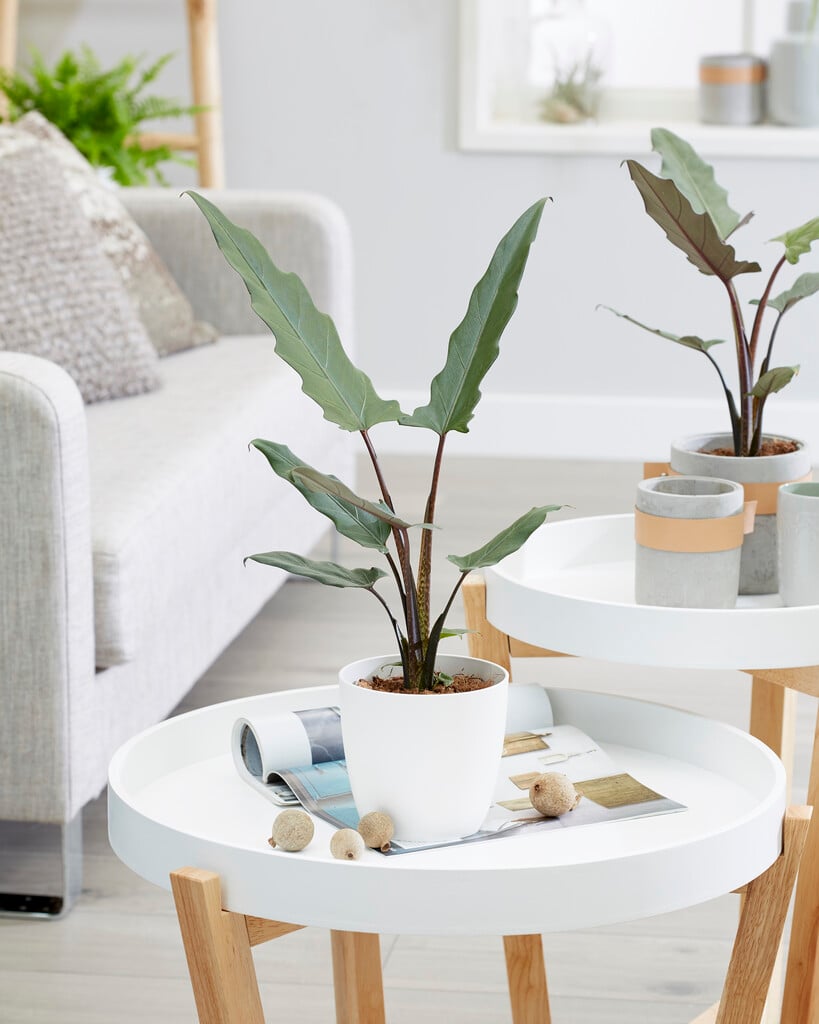Size
Ultimate height
1–1.5 metresTime to ultimate height
2–5 yearsUltimate spread
0.5–1 metresGrowing conditions
Moisture
Moist but well–drainedpH
Acid, NeutralColour & scent
| Stem | Flower | Foliage | Fruit | |
| Spring | Green Purple | Green | ||
|---|---|---|---|---|
| Summer | Green Purple | Green | ||
| Autumn | Green Purple | Green | ||
| Winter | Green Purple | Green |
Position
- Partial shade
Aspect
East–facing or West–facing
Exposure
Sheltered Hardiness
H1ABotanical details
- Family
- Araceae
- Native to GB / Ireland
- No
- Foliage
- Evergreen
- Habit
- Columnar upright
- Potentially harmful
- TOXIC if eaten, skin/eye irritant. Wear gloves and other protective equipment when handling. TOXIC to pets - see the HTA guide to potentially harmful plants for further information and useful contact numbers
- Genus
Alocasia are robust evergreen rhizomatous or tuberous perennials with large, usually peltate, leaves with conspicuous veins; insignificant flowering spathes may be followed by orange-red fruits
- Name status
Correct
- Plant range
- N New Guinea to Bismarck Arch.
How to grow
Cultivation
Grow indoors in a peat-free houseplant compost with added perlite, in bright, indirect light. Water freely and apply a general liquid fertiliser every 2-3 weeks from spring to autumn. Provide high humidity by placing the container on a tray of moist gravel or pebbles. Reduce watering to a minimum in winter, and keep above 15°C. See Alocasia for further advice
Propagation
Propagate by seed at 23°C (73°F) as soon as ripe. Propagate by Division in spring or summer. Propagate by stem cuttings in spring
Suggested planting locations and garden types
- Houseplants
- Conservatory and greenhouse
Pruning
No pruning required
Pests
May be susceptible to glasshouse red spider mite and mealybugs
Diseases
Generally disease-free
Get involved
The Royal Horticultural Society is the UK’s leading gardening charity. We aim to enrich everyone’s life through plants, and make the UK a greener and more beautiful place.
